People value their freedom and comfort these days. They want to travel, go on business trips, explore local grounds, and reach places on their own terms and at their own pace. That’s why the car sharing business became so popular. And it’s a highly competitive industry. There are many car sharing companies, so the customer has loads of choices and won’t tolerate flawed service.
How do you know that your customers are satisfied and have a positive experience with you? Or what problems do they face during their car rental customer journey? Have you ever tried to identify opportunities to improve their experience? You don’t need superpowers or a crystal ball to find it out; customer journey mapping has got you covered.
To find the key to the customer experience vault with all the answers, you need to visualize your customers’ journey and consider everything they go through at different stages, from learning about the company to stop using its services for some reason.
It’s like a story about a person who represents a certain group of your target audience, as well as their experience, goals, and actions. But it’s rather a biopic than fiction, ‘cause behind its content are the real people.
Contents
How to build a car sharing customer journey map?
Conduct proper research
It’s your first and super important step. Unreliable data will certainly spoil your customer journey initiative as your map will be not about your real customers and your chances to improve their experience acting on it are close to none.
Conduct customer interviews, use support department logs and marketing analytics, read market reports — there are lots of opportunities to get reliable data.
What’s next? Personas time.
Identify car sharing personas
The data you gathered during the research will help you to group all the customers into different personas. To do the most efficient car rental customer segmentation, take the steps we listed and explained in our personas guide.
Here’s how your car sharing customer personas can look like:
All personas want to get from point A to point B, but there are nuances.
- Jeremy Mills is a young student with no money for his own vehicle and a fondness for party weekends outside the campus. For him, the car sharing service is associated with fun.
- Judi Garcia is a gallerist with high ideals. She’s concerned about ecology and looks only for electric vehicles that are quite rare in her city.
- Virginia Peters is a business lady. She is used to doing everything herself, so she often chooses car sharing over a taxi, even in a city she’s never been to before.
- Harry Lawson lives in a suburban area and has to share a car with his wife. So a few times per week he rents a vehicle to get to the office and back home.
While Jeremy can join a friend in their car, Judi can ask somebody for a lift, Virginia can go by taxi, and Harry has no other choice.
See how different personas’ goals, pains, and situations can be? You can’t approach them all from the same angle. But first, decide whether to build a separate journey map for each or consider having multiple personas on the same map.
Define car sharing customer journey map stages
The personas are done and ready for a journey that consists of stages. Each stage describes a certain moment in time that really matters and affects the customer experience.
The number of stages depends on your mapping goal and the required scope. Maybe you want to focus on the stages where your persona rides a vehicle, therefore your map will contain stages like choosing a car, initial car checking, riding, stopping for gas, parking, and final car checking. But if you want to learn more about user experience with your service’s mobile app, the stages will be different. E. g., app downloading, registration, account setup, accessing a car, contacting support, payment, and feedback.
No matter how many stages you will include, there are some general questions you would want to answer at each. of them They will help you prepare the ground for future insights and reach more dimensions of your customer’s experience.
General questions for each journey map's stage
- What is your persona’s goal?
- What do they try to achieve using your service?
- What are the actions your persona takes at this stage?
- What channels does the persona use?
- What are your touchpoints?
- What emotions does the persona have?
- With whom does your persona interact?
- What problems does the persona face?
- What can you do to enhance your persona’s experience?
- Etc.
Do you know what stages can be included in the end-to-end car sharing customer journey? We can provide an idea or two. We are going not only to list those but also explain how to map a journey at each of the possible stages.
We built a map as an example to illustrate how you can dig deeper into these stages. Your own car sharing customer journey map may differ, but below we will also provide general tips that are valid for any stage.
Awareness or First Touch
It’s the stage where customers learn about your services, research, and consider using it. You can build separate stages or and split them into substages if you want:
Or address them all within one stage, which is the First Touch in our example.
Now, put on your customer’s shoes and think like them. Below are some questions that they can ask themselves at this stage:
- Is this car sharing that good or do I need to search for other services?
- Nice pricing, but what’s the catch?
- Are their cars safe for a driver?
- Do they really have what I need?
- How many cars are in their car park?
- Do they have any discounts or loyalty systems?
- Does their app fit my operating system?
- How do they address problematic situations?
- Will they approve my account?
- What additional services they offer?
Then think about what goals your customers try to achieve.
Possible car sharing users' goals
- Lower prices
- Reliable vehicles
- Values alignment
- More mobility
- Means to explore new places
- Personal comfort
- Money-saving
- Means to help others
- Safety during the ride
Then describe what this or that persona does at the stage. Step by step. It’s like a diary only without reflection. Think, act, and even write not from your business’s perspective but your customer’s. Such an approach is way more immersive and evokes more empathy.
Don’t forget to specify channels. For instance, Harry speaks with his colleagues then searches the service they advised on Google. He tries to download its app on his phone, but it doesn’t fit his operating system. He sees another car sharing service’s advertising and goes to its website. It’s a linear process, so we put all the channels Harry uses on the straight line, one by one. Here’s what we got.
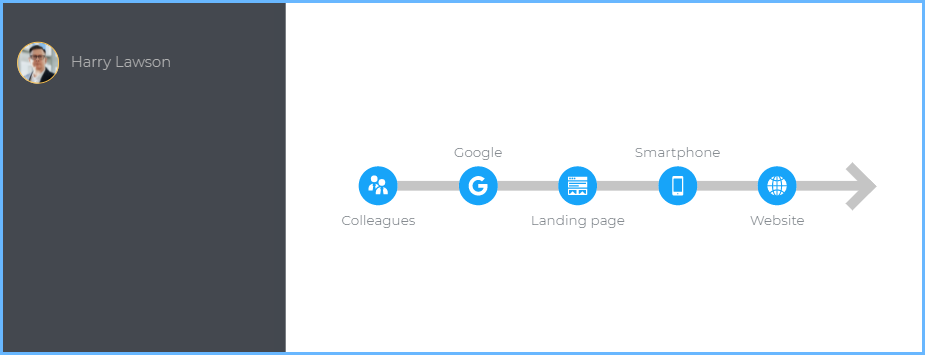
And don't forget an important step — identifying problems the personas face at this stage. Remember the process section? Some of the problems could be there. Maybe a customer was misled by a banner with the awesome discount you do not actually offer. Another person can be super annoyed by a rude promoter of your brand. List everything, those are your keys to customer experience improvement.
When you are done with the problem part, you can sit and think of the ways to fix all the problems you listed or postpone brainstorming to the moment the map is done.
Using the application or Becoming a user
Here our personas start using the car sharing mobile application. And we divided this stage into the following substages: registration, account setting up, and choosing a car for a ride.
So, what questions our personas can have at this stage:
- How much memory does the app require?
- Is the interface intuitive enough?
- How secure is my payment data?
- Can I book a car?
- Where I can find additional services in the app?
All the other steps are similar to the ones we stated above. What goals a user is trying to achieve here? How do they act? What channels do they use? Are there some problems they face? How can you fix those?
For example, Jeremy has no problems with downloading the app, creating an account, and other technicalities. All he’s thinking about is what car he will ride this Friday. He has yet to know that this Friday the car he would choose will be left on the road because of breakage.
Ride or Using the service
Now our personas take the car and drive it. That's why we include here the unlocking moment, the riding itself, and parking.
Possible questions of your customer at this stage:
- What if I won’t be able to unlock the car?
- Is this vehicle safe to drive on a highway?
- How can I contact the service’s support agent?
- How old is this car?
- Who are the car manufacturers?
- Do I have to fill the car up?
- Who is supposed to pay for gas?
- What if my car is taken while I’m out for a few minutes?
The following steps you already know.
Retention
Here our personas decide whether to cancel your car rental agreement or continue their journey with you. Therefore, their questions could be:
- Will they raise the prices for thier car sharing services?
- Should I use this contactless rental service next time?
- Is there a better contactless rental service out there?
- Do I have to pay for a breakage? (poor Jeremy)
Yet again, fill in processes, channels, problems, ideas, and anything that makes sense in your particular case. When it comes to customer experience, any details can be important.
Work with the finished car sharing customer journey map
In the end, you might have a multi-persona map looking like this (or some maps with one persona):
So, now you know how to build a car sharing customer journey map from scratch and have an example of it before your eyes. Now, your customer experience is in capable hands.
Once you’ve built your own customers’ journey, consider running an ideation session and this cheat cards deck will make it successful.
Think of the ways you can fix the pains of your customer's experience and enhance the things they enjoy. For example, you can create more relevant and honest ads, focus on other channels to reach your audience, work with negative reviews on the internet, and so on. Look for opportunities.
And you know what? Let's not draw this out into a lifetime special. Build your own car rental customer journey now. And feel free to take our personas and car sharing journey map as a source for your inspiration:
PS: If you're interested in a car insurance customer journey map creation, we've got you covered, too. Happy mapping, happy customers 😉
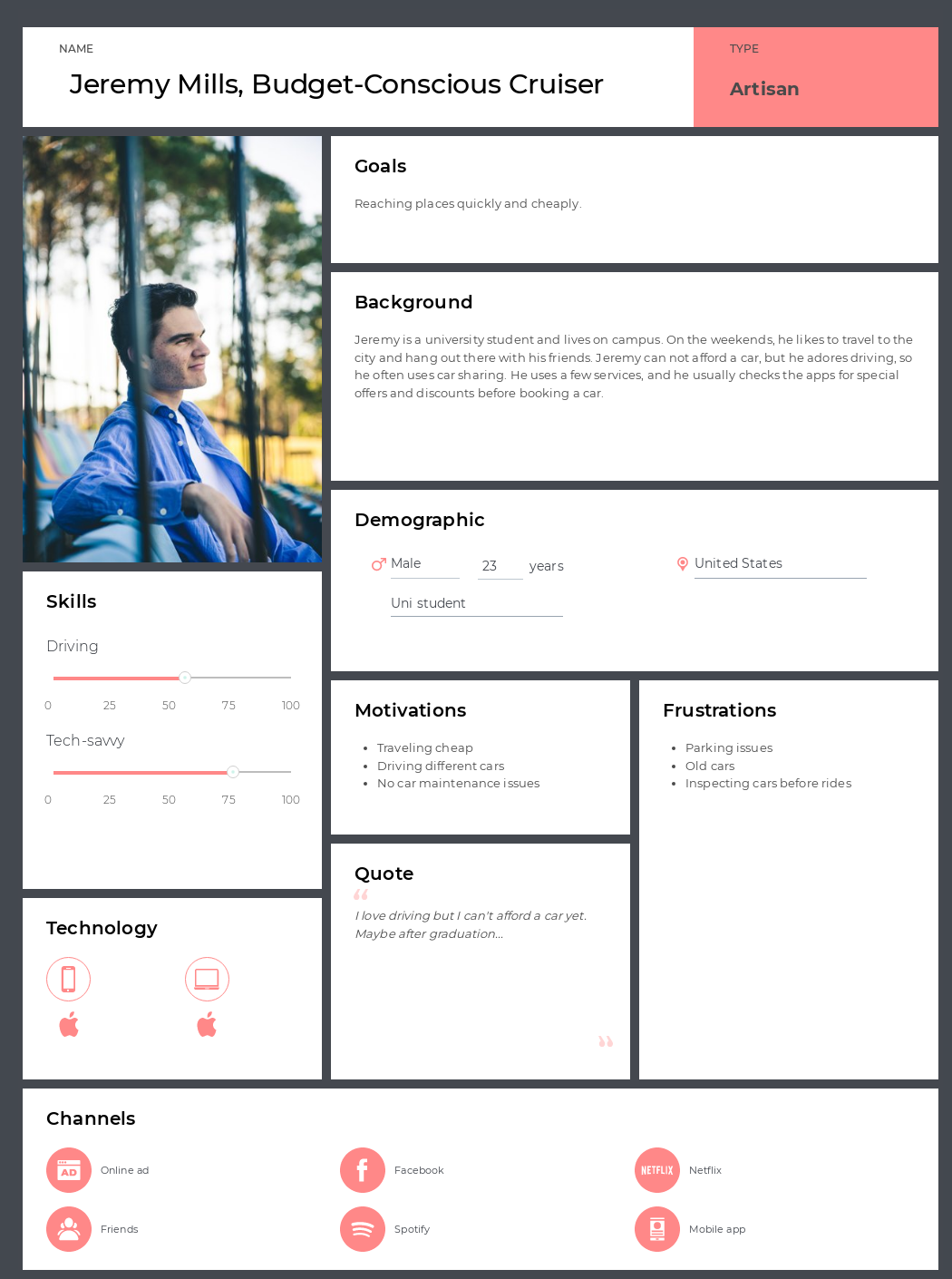
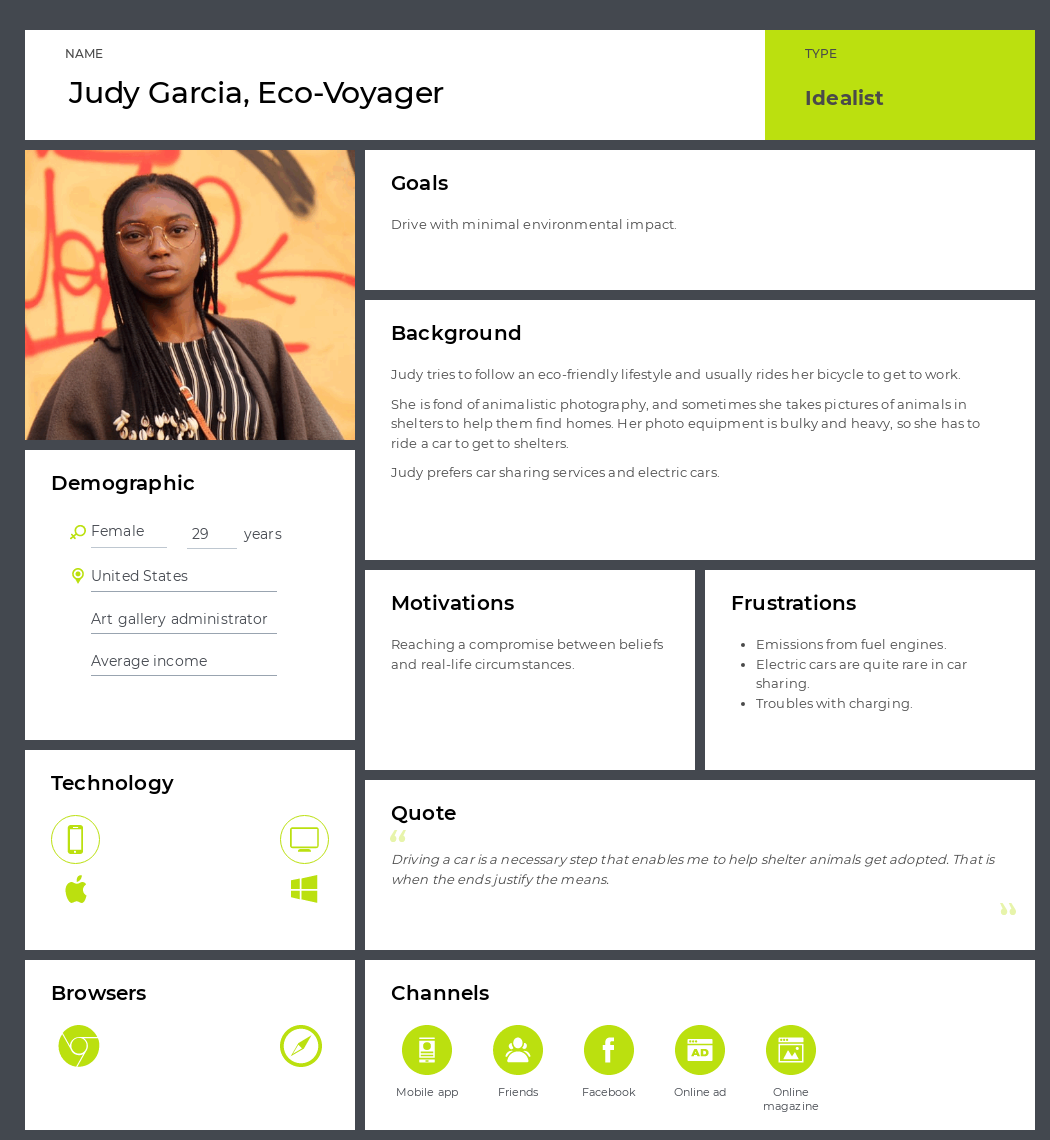
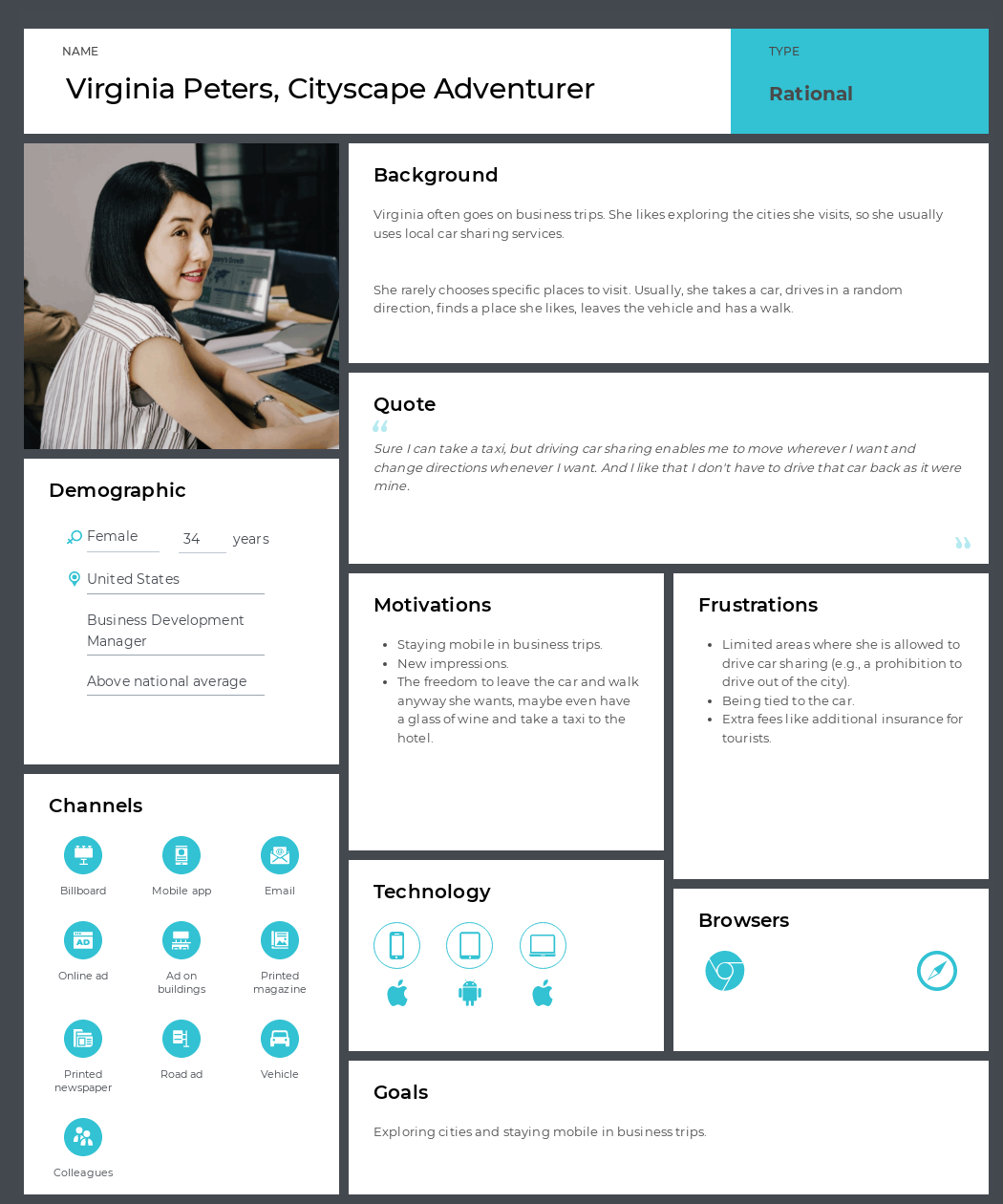
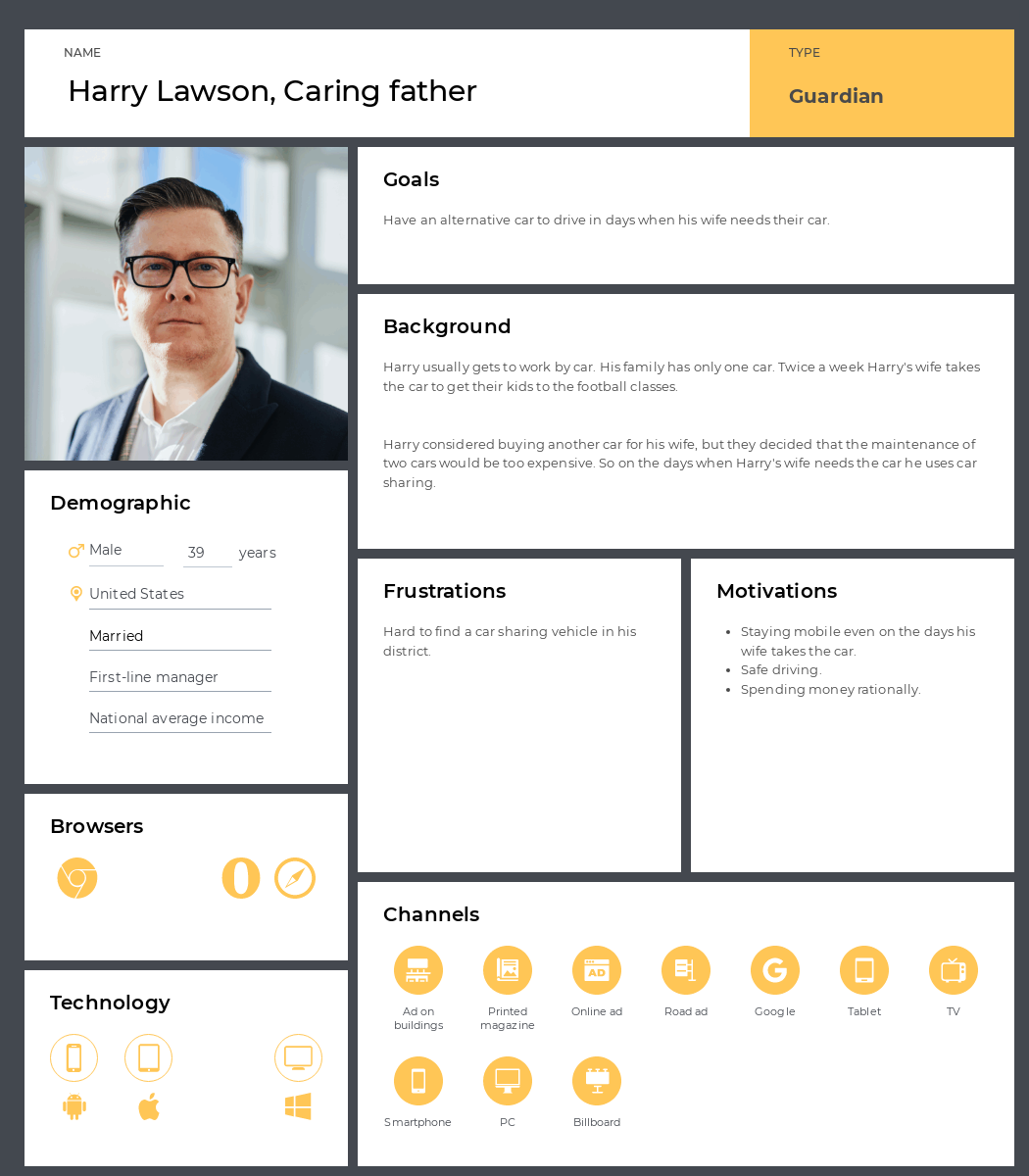

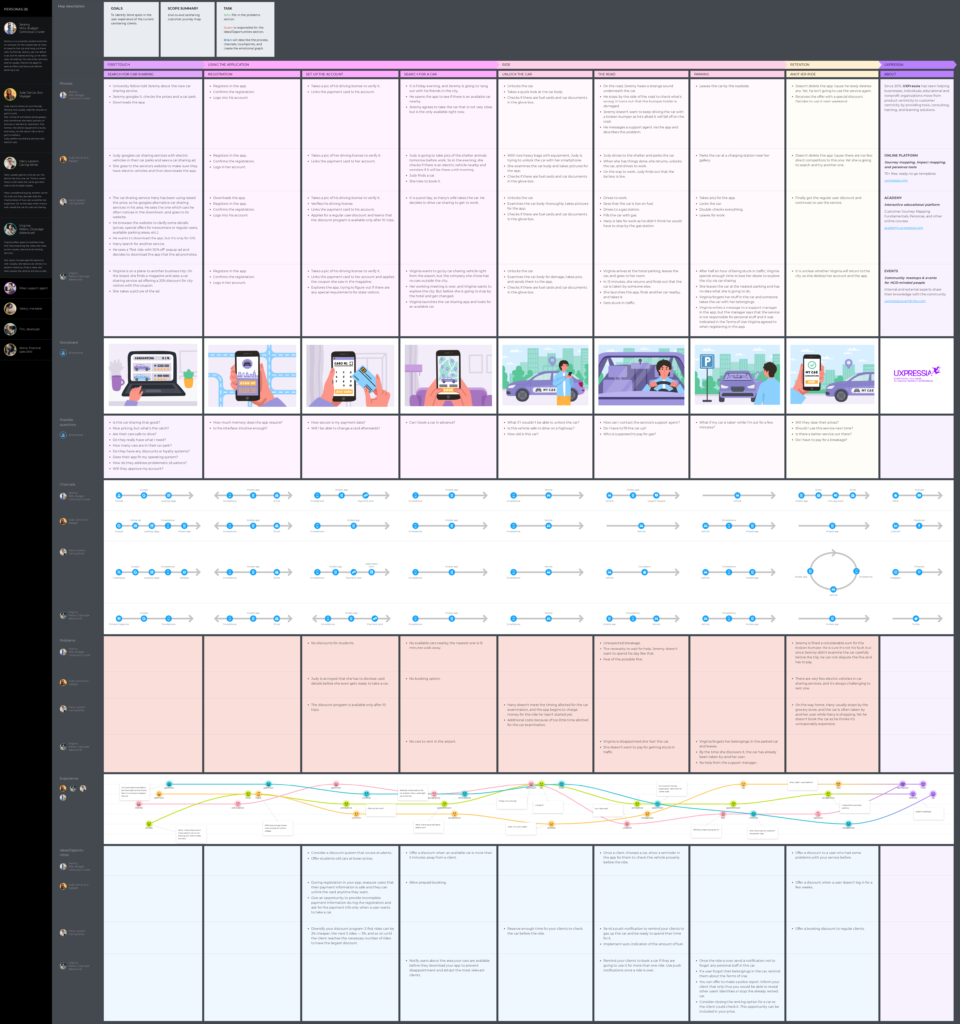
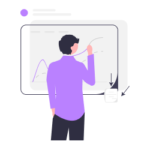

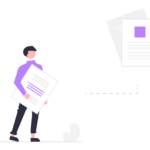



Interesting how these new areas and customer experiences keep appearing. A few years ago, an automotive customer journey map just didn’t exist because car sharing was not as popular, at least where I’m from. And now with the new businesses and niches come new challenges and opportunities in CX. Thanks for the post
Thanks for this car sharing customer journey template. 1 persona is great but 4 personas are way better.